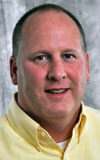Reducing Peak Energy Demand: The Hidden Benefit of Cool Roofs
This course is no longer active. AEC Daily will not report completion information for this course.
Across the United States, building owners in hot and cold climates are subject to peak energy demand charges. This course examines the economic and environmental effects of peak energy demand as applied to modern buildings, focusing on how peak energy demand is incorporated into utility billing structures and how cool or reflective roofing yields peak demand and net energy savings in all climates within North America.
Upon completion of this course, the Learner should be able to:
- Define peak energy demand and discuss how commercial building owners may be adversely affected by peak demand.
- Identify peak demand charges on a typical commercial electrical bill and analyze peak energy demand management strategies.
- Discuss how cool roofing offers a significant benefit in reducing the energy and environmental costs associated and how buildings in different climates can achieve the same peak savings.
- Estimate the potential savings achieved when installing a cool roof and explain how to achieve other business and community benefits associated with reducing the peak energy demand.
Approximately 1 hour. Delivered online, at your own pace.
Presented by Keith Gere, PE on behalf of Chemical Fabrics and Film Association. View the Privacy Policy .
Presenter Information

Name: Keith Gere, PE
Title: Director of Engineering Services, Duro-Last Inc.
Background: Keith Gere PE is the Director of Engineering Services for Duro-Last®, Inc. of Saginaw, Michigan. As a graduate of the University of Toledo with a B.S. in Civil Engineering, Keith has more than 20 years of experience in structural engineering and land development and is licensed in the State of Michigan and Ohio. While working in the roofing industry for the past seven years, he has had a strong focus on codes and standards for both Duro-Last and the industry. In this role at Duro-Last, Keith is responsible for testing, codes and approvals, technical documents and new product development. He is also involved in key industry organizations, serving as chairman of the Technical Committee for the Chemical Fabrics and Film Association (CFFA), co-chair for the GS-1 Gutter Standard for the Single Ply Roofing Industry (SPRI), and as a member of the ASTM DO8 Waterproofing Committee.
